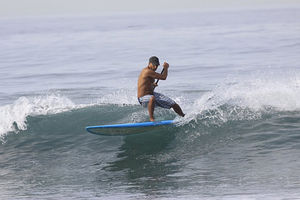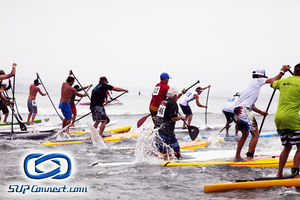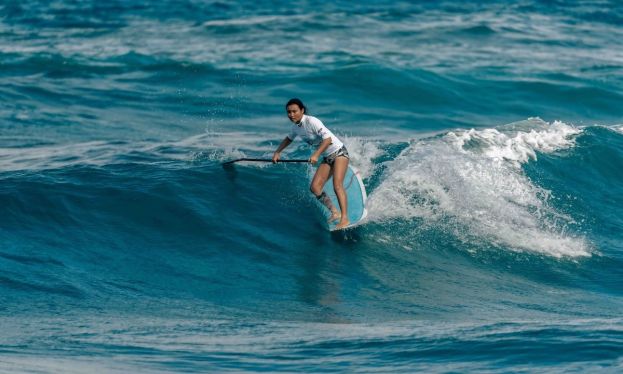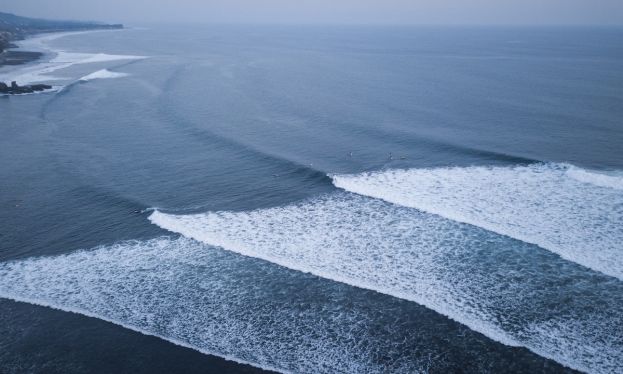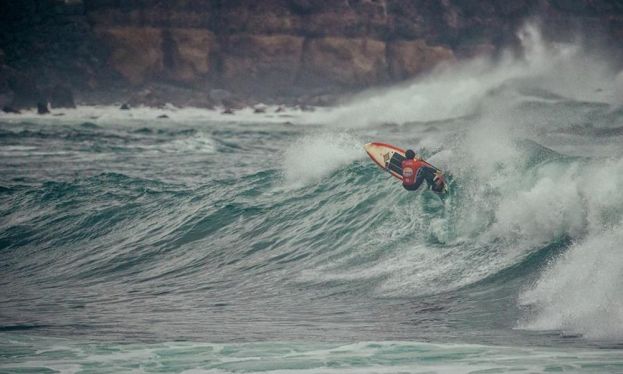Volume in Stand Up Paddle Surfboards
- Written by Staff
- Published in Tips
- Comments::DISQUS_COMMENTS
Written by Andre Niemeyer
Whitney Guild is the most vocal advocate for considering volume in board choice.
Whitney Guild's Background
|
Floating is the Beginning Volume is the easiest way to gauge board floatation |
ENCINITAS, California – Why not place volume alongside other typical stand up paddle (sup) board dimensions, like length, width, and thickness? Whitney Guild gives plenty of reasons to do so. With a robust background in nearly every action sport you can possibly imagine, Guild’s experience ranges from surfing and skating to wind surfing and stand up paddling, plus everything in between, including even some breakthrough sports like snow kiting. And experience is not all. He is an exceptional athlete in nearly every discipline he sets himself to. As a highly competitive athlete, Guild’s performance in most of these sports has earned countless honors, including even an entry in the Hermosa Beach Surfer’s Hall of Fame. Enough said: the man has plenty of credentials to speak on the topic of stand up paddle board design. (Join the Gear Talk group on Sup Connect.)
Relating Volume to Weight & Skill-Level
|
Volume Relative to Weight & Skills The amount of volume needed changes per paddler |
Guild’s proposal is to make volume a key factor in the board designing and buying process. Volume, he argues, loosely determines a board’s flotation. As a result, we can relate volume to both the rider’s weight and skill-level to help determine the most suitable equipment for that rider. Guild did just that. He built a water tank and began measuring the volume of a barrage of boards, some belonging to beginning, others to intermediate, and still others to advanced riders. Guild also took notice of the riders’ weight. After going through numerous boards, he observed that stand up paddle surfers of a particular weight and skill-level typically ride boards with a similar amount of volume, just enough to comfortably float them. The end result was what we’ll call ‘The Guild Reference Table for Stand Up Paddle Surfboards.' (Become friends with Whitney Guild on Sup Connect.)
The Guild Table for Stand Up Paddle Surfboards
|
Guild Factor (GF) for Beginn. = 2
Guild Factor (GF) for Interm. = 1.7
Guild Factor (GF) for Advanc. = 1.3
Board Volume (L) = (Lbs x .45) x GF Guild Formulation for stand up paddle surfboards |
The Guild Reference Table for Stand Up Paddle Surfboards proffers a correlation among the aforementioned factors: volume, weight, and skill-level. To keep our units straight, we’ll be using Liter (L) for volume and Kilogram (Kg) for weight. With that in mind, here is the Guild Table. For advanced riders, the volume of the sup surfboard is 1.3x the weight of the rider. For intermediate riders, the volume is 1.7x. And for beginning riders, the volume is 2x the weight of the rider. With those factors under our belt, we can now determine the volume of the stand up paddle surfboard for anyone surfer, assuming we know his weight and skill-level. Take, for instance, a beginning rider weighing 180lbs. We begin by converting the weight to kilograms (180lbs x .45 = 81kg). Then, we multiply 81kg by the “Guild” factor for beginning riders (81kg x 2 = 162L). And we end up with the volume of the sup surfboard for that beginning surfer, that is, 162L. (Signup for the Sup Connect Newsletter.)
Questions & Applications
|
Extending Volume Guild's Volume Approach Applied to Retail & Beyond |
Some interesting questions and applications arise from the Guild Table. First, assuming that the boards measured suitably fit their riders, we can then use the Guild Table to prescribe how much volume a rider should have for his stand up paddle surfboard. Or at least, it serves as a helpful reference point. Second, the same weight/skill-level/volume correlation can be applied to every other stand up paddle modality, including racing, white water, touring and etc. Third, volume can be printed on every stand up paddle board to assist the sup business world to categorize equipment, from manufacturing facilities down to retail transactions. Fourth, once volume becomes a popular currency, the next step can be to explore the relation among volume and its cousin dimensions (width, length, and thickness) eventually to land on a standardized stability and flotation formulation, especially as these relate to the different skill-levels and riders' weight. (Join Guild's Board Design group on Sup Connect.)
© Copyrighted & Exclusive SupConnect.com Content

Staff
Submit your news, events, and all SUP info, so we can keep promoting and driving the great lifestyle of stand up paddling, building its community, and introducing people to healthier living.
Website: supconnect.com Email This email address is being protected from spambots. You need JavaScript enabled to view it.

